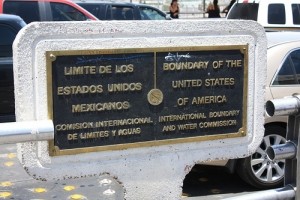
To the disbelief of some, Congress finally passed a long-term transportation funding bill for the first time in a decade. That’s good news because some critical needs related to roads and bridges will now get attention. However, the funding was far from adequate to address other critical transportation infrastructure needs.
The five-year appropriation of $305 billion was much smaller than the $400 billion that was requested, but the new legislation increases spending on highways by 14.9 percent and transit money by 18.1 percent.
Texas will benefit from the bill’s creation of a Coordinated Border Infrastructure Reserve Fund. This part of the new law allows states to transfer up to 5 percent of the federal funding for surface transportation to other infrastructure projects along border crossings. This will give Texas money to pay for upgrades at ports of entry that are increasingly bogged down by wait times and inefficiency. Because goods valued at more than $200 billion are transported between Texas and Mexico every year, this is a critical need.
The bill encourages public-private partnerships (P3s) and especially private capital investment. It allocates funding for maintenance and repair of bridges on the National Highway System and explicitly encourages states to bundle multiple bridge repair projects to encourage more efficiency of delivery and to attract interest from bidders and private investment. Those kinds of projects are often financed through P3s.
To the dismay of many, however, funding provided through the Transportation Infrastructure Finance and Innovation Act (TIFIA) federal loan program was decreased. Though it had $1 billion in funding in 2014, the program is only funded at the level of $275 million in 2016, rising to $300 million in the final two years of the bill. TIFIA loans are provided to state and local governmental agencies to help them attract additional financing. The additional funding usually comes from private entities, so the TIFIA loans have been excellent incentives for P3s. TIFIA funds, since 1998, have leveraged $22 billion in federal funds into more than $78 billion in infrastructure investment from private firms.
A similar program designed to fund water projects, the Water Infrastructure Finance and Innovation Act (WIFIA) was also addressed by the bill. Here, Congress sought to encourage public and private entities to collaborate. Regarding water infrastructure projects funded with WIFIA loans, the bill requested the Environmental Protection Agency and the U.S. Army Corps of Engineers to “include specifications that will ensure private capital has an equal opportunity to engage in the financing of these projects.”
There are two new programs that will also affect public-private collaborations.
One new grant fund will allocate $800 million in the bill’s first year, rising to $1 billion in 2020. The funding is for grants of up to 60 percent of the costs for highway, bridge, intermodal and freight rail projects that improve efficiency of the nation’s transportation system and reduce bottlenecks. Though it doesn’t explicitly refer to P3s, the fact that it caps federal contributions at 60 percent of a project’s cost has led many public-private partnership experts to see the program as a perfect avenue to bring P3 proposals to these projects.
The bill also created the National Surface Transportation and Innovative Finance Bureau, which will be responsible for administering the application process for federal funding programs. The hope is that the new bureau will speed up that process. The bureau also has been charged with researching best practices for innovative financing methods such as P3s and it will issue a report within a year that evaluates various types of procurement – design-bid-build, design-build and P3s. That analysis and the recommendations that follow will be carefully monitored by both public- and private-sector investors.

